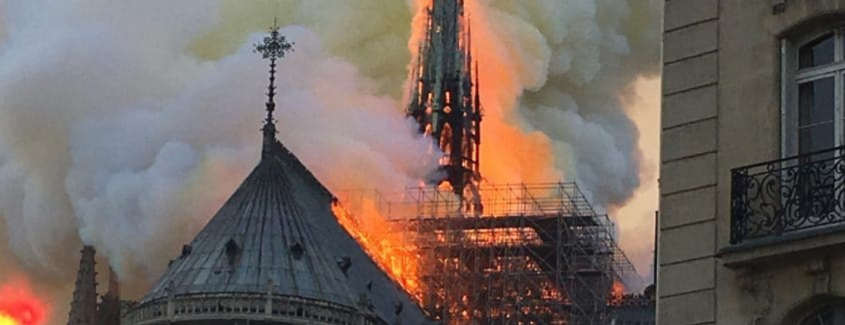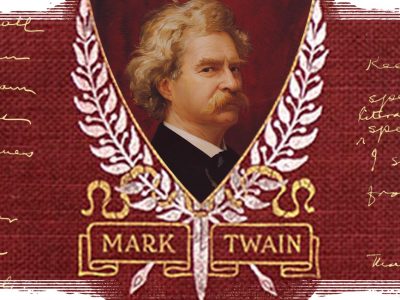
Editor’s note: This article first appeared at The American Spectator.
The image of the Cathedral of Notre Dame engulfed in flames will remain seared in memories. I was made aware of it when a student burst into my office shouting that the magnificent church was on fire. I was about to head into my Major European Governments course, where we read George Weigel’s prescient work, The Cube and the Cathedral. The Cathedral in the book is Notre Dame.
As the ensuing minutes proceeded, the conflagration only worsened, captured by the cataclysmic moment when the towering spire collapsed. It took me back to watching the collapse of the World Trade Center tower on 9/11, though that was worse because you knew you were witnessing not just the death of a structure but a significant number of human beings.
With Notre Dame, we figured there was probably no one trapped inside. The fire proceeded slowly enough for people to get out—in fact, so slowly that I was surely one of countless millions watching on a computer, a TV, a phone, yelling in frustration: What are the French authorities doing? Can’t they stop this? Meanwhile, the flames encroached upon the relics, the artifacts, the windows, the paintings, the irreplaceable—upon what is believed to be the actual crown of thorns of Christ. On Holy Week no less.
It was a feeling of helplessness. And in that sense, it was a frustration similar to what many of us have felt toward the French authorities for a long time, as they’ve eagerly embraced secularism and rejected the very Christian patrimony represented by the Cathedral of Notre Dame. The burning cathedral, and the state’s seeming inability to stop the blaze, seemed a harsh symbol of France’s vanishing religious heritage.
Angela Merkel, one of the few European leaders unafraid of tradition, observed that Notre Dame is “a symbol of France and of our European culture.” It certainly is. Its erection was just that, as was its survival through centuries of struggles, as is its smoldering now.
Hilaire Belloc said that “the faith is Europe and Europe is the faith.” Well, the Christian faith is in worse shape in Europe than at any time since the first stones of Notre Dame were laid eight-and-a-half centuries ago. And in many respects, France has led the way in the aggressive secularization. Numerous glorious Parisian churches today stand mainly as tourist attractions.
Recall a defining moment at the turn of this new century. In the early 2000s, a battle raged within the European Union over whether to include a reference to God in the EU constitution. It was a natural acknowledgment, a critical reminder to Europeans of where their rights come from.
The God opponents were the predictable European progressives: leftist Eurocrats in Brussels, Labor Party atheists in Britain, German socialists, Scandinavians, and, of course, the French leadership. The God supporters included new EU member states that had escaped godless communism—with Poland in the forefront, along with Hungary and the Czech Republic—and the continent’s preeminent religious figure: Pope John Paul II.
The pope, suffering from advanced Parkinson’s, took up the fight with vigor. In the summer of 2003, he devoted a series of Sunday Angelus addresses to this political issue that transcended politics. He made arguments akin to those made by the American Founding Fathers: It is crucial for citizens living under a constitution to understand the ultimate source from which their rights derive: their rights come not from government but God. What government gives, government can take away. What God gives, government cannot take away.
“European culture cannot be understood without referring back to Christianity,” explained John Paul II. “Christianity is at the very roots of European culture.” He said that “an explicit recognition of the Christian roots of Europe” would represent “the principal guarantee for the continent’s future.”
The pope was countered by French president Jacques Chirac, who sniffed: “France is a lay state, and as such she does not have a habit of calling for insertions of a religious nature into constitutional texts.” The “lay character” of France’s government and public institutions, according to Chirac, simply did “not allow” for a reference to God in a constitution.
Nope, no room for God, insisted the president of France in spearheading the continental revolt. It was predictable Jacques Chirac, who in retrospect seems like Joan of Arc compared to Francois Hollande or Emmanuel Macron. So goes France.
In the end, the EU compromised on a gutless statement grudgingly conceding the continent’s “cultural, religious, and humanist inheritance.” It was a nod to God that George Weigel described as “so bland as to be meaningless.”
But, in an important way, it was not meaningless. It was sadly symbolic. Again, Belloc: “the faith is Europe and Europe is the faith.” Well, the state of the faith in much of Europe is in flames.
That brings us back to the Cathedral of Notre Dame, Anno Domini 2019, the day after Palm Sunday. We do not yet know what caused this tragic episode, nor whether the authorities and responders could have done a better job preventing the sickening level of destruction. Let me repeat: I don’t know whether the authorities and responders could have done a better job. Maybe they did a great job. Maybe what was saved was spared because of its original architecture. I don’t know.
Nonetheless, this seems, at the least, an undeniable symbol of France’s loss of its Christian heritage and its failure to protect its Christian heritage. In this case, the pinnacle of its Christian heritage.
The Easter season is about hope, about a Redeemer who rises again. If there’s a particular hope for Europe this Holy Week, it’s that the Cathedral of Notre Dame will be resurrected. And yet, given the state of modern France, it’s hard to be hopeful about what will replace it.
We can’t go wrong placing our faith in the inspiration of that cathedral, but we will always find disappointment in the secular authorities who seek to replace it. The former stood strong for over 800 years; the latter will fail us again and again.




